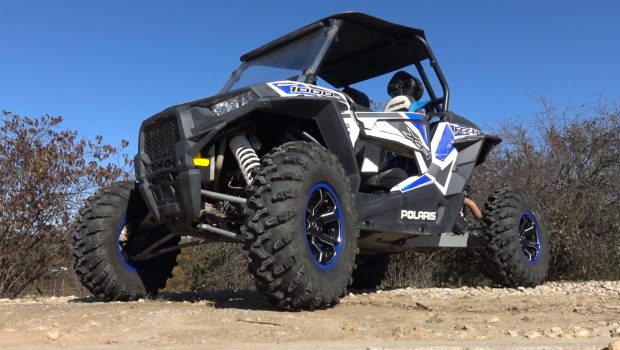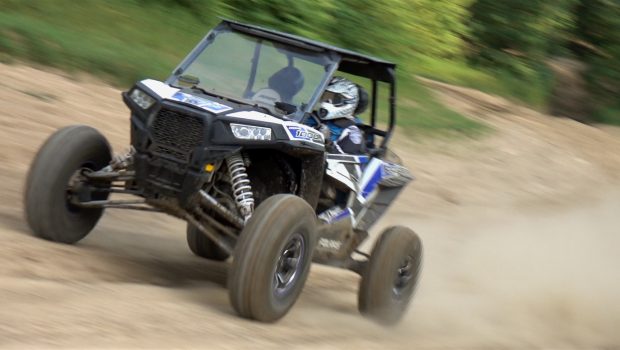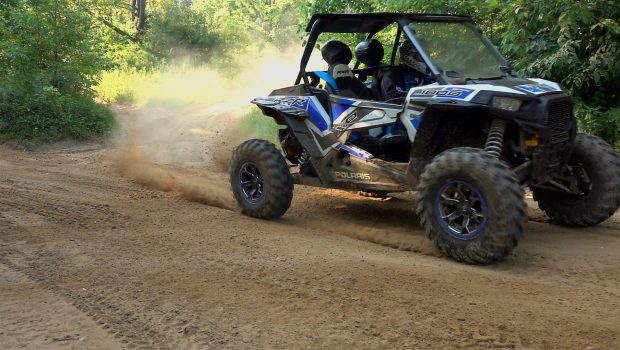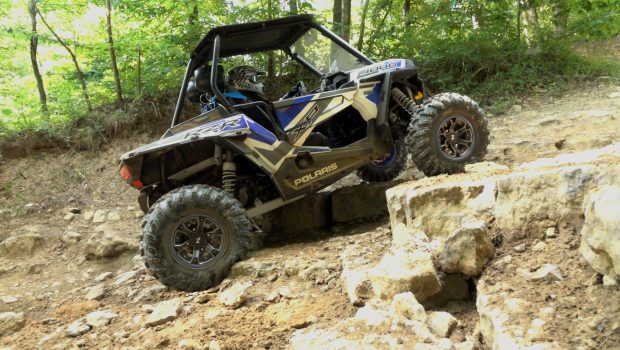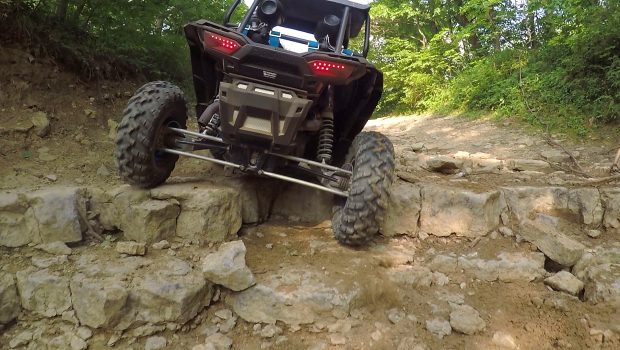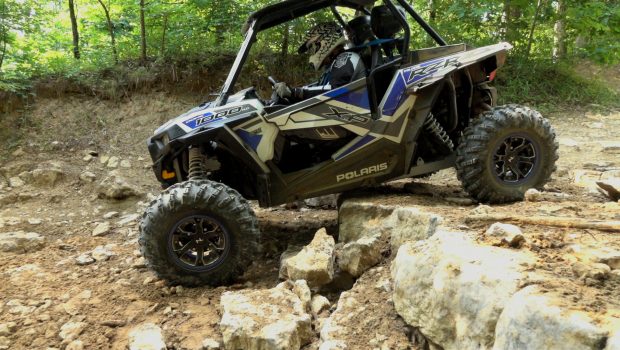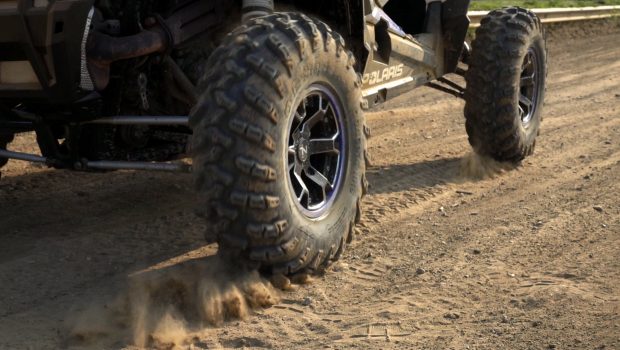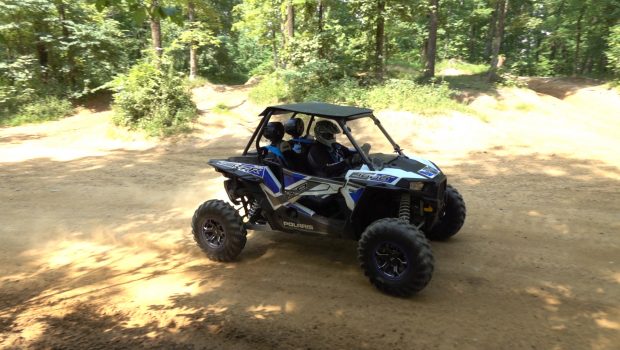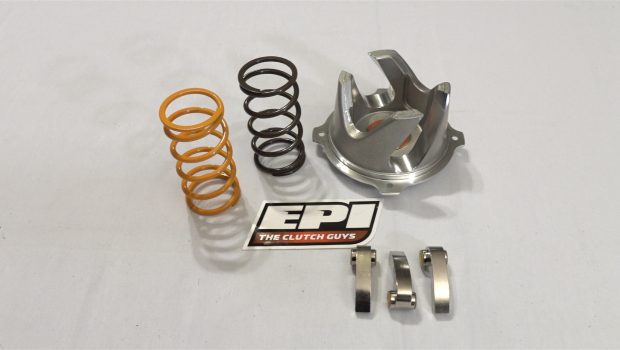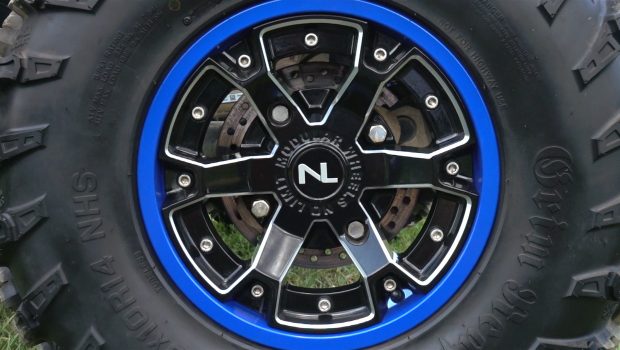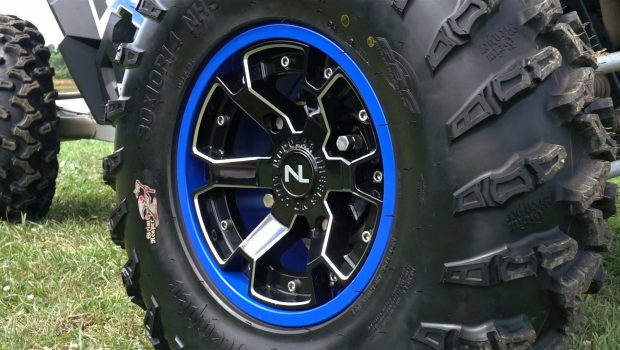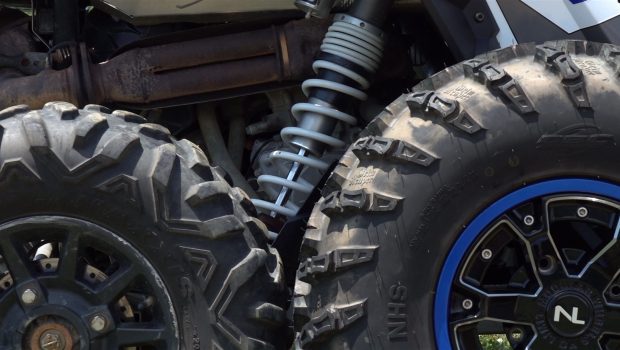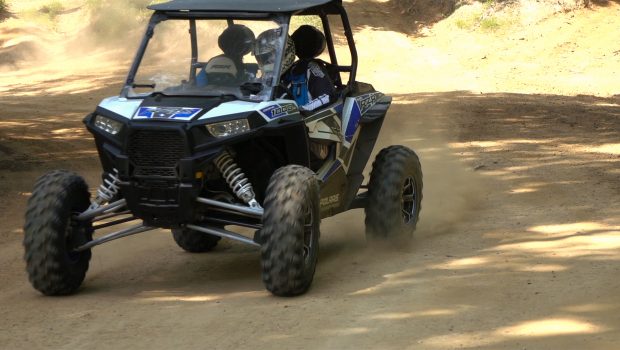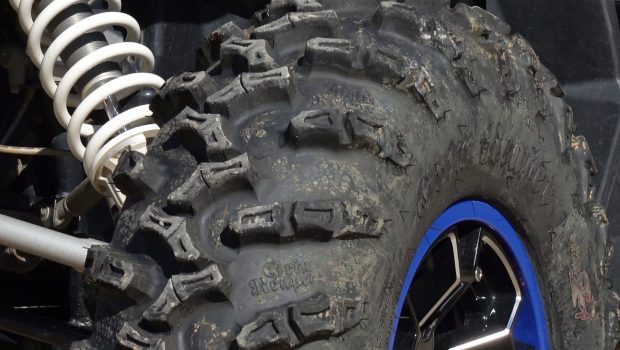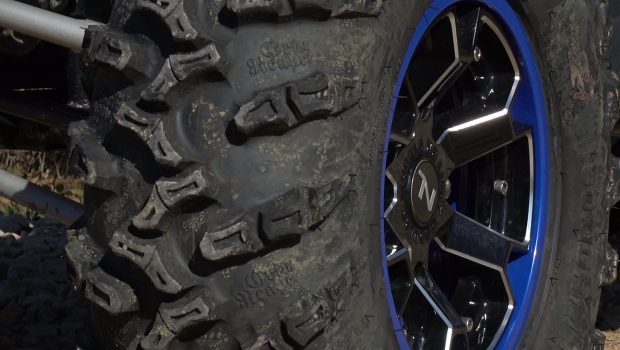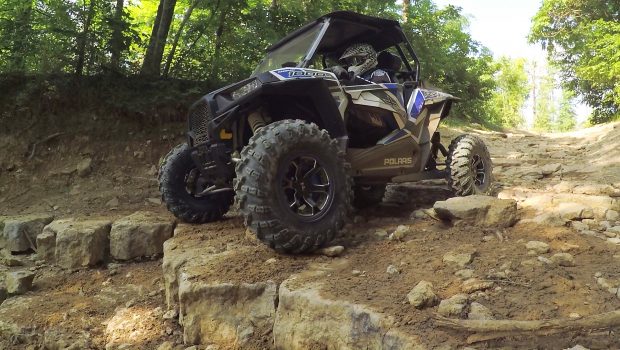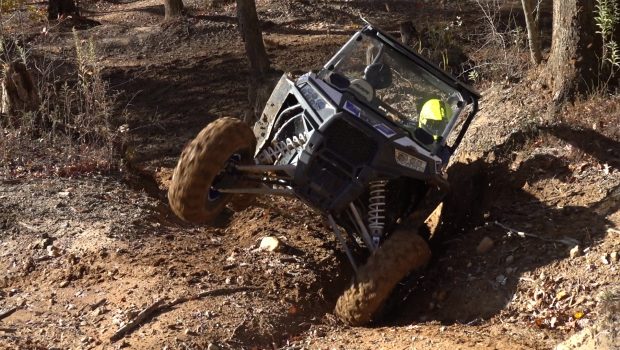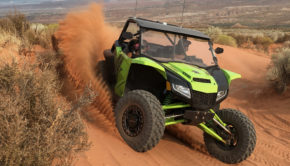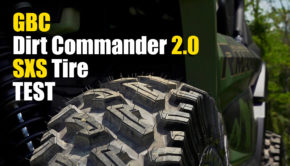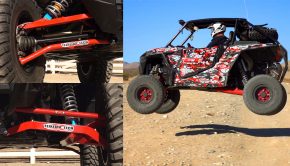Published on July 27th, 2020 | by Joe
How and Why to Add Big Tires to your RZR XP 1000
There are some good reasons to install larger tires on your SXS, with more traction, ground clearance, and smoother rolling over bumps topping the list. While many enthusiasts believe they can simply slap later tires on their rig, this often results in a loss of performance and more wear and tear on the machine. Picking a good setup will vary depending on your machine’s tire clearance, horsepower, type of transmission, and the type of driving you’ll be doing. In this video, we’ll look at the things to consider when adding larger tires and wheels to the super popular RZR XP 1000. This should also give you an idea of things to consider on any CVT-equipped SXS.
Things to Consider
Picking bigger tires and wheels
Adding larger tires is like gearing your SXS up. This can make acceleration more sluggish from takeoff to top speed. While you might expect bigger tires to increase top speed, it can actually reduce it, and the larger the tires you choose, the greater the negative effects can be. The increased rotating mass of heavier tires and wheels will also affect acceleration, so choosing the right tires and wheels should be done with a consideration for how it will affect engine performance.
Clearance inside the wheel wells should be taken into consideration. According to the tire and wheel experts at Planet SXS, the RZR XP 1000 can accommodate tires up to 32” tires with its stock A-Arms, depending on the tire, air pressure, and wheel offset. If you want to run tires larger than 32”, you might want to consider aftermarket A-Arms that move the front wheels forward for additional clearance.
The first thing to consider when picking bigger tires is your intended use. We wanted a trail tire that would excel in the wetter months in our area from late fall to early spring, so we went with GBC, Grim Reapers. They feature widely spaced tread on the sides with a crisscrossing tread pattern down the middle for smoother rolling on hardpack. An 8-ply radial design offers toughness and a supple ride. Check out our test on the Grip Reapers for more on their design and performance. Replacing 29” tires, the 30” tires we chose don’t sound significantly different, but they’re actually a couple inches taller than the half worn Bighorns we’re replacing, providing the small increase in ground clearance and rollover that we were looking for.
We prefer sitting our machines up with the same size tires and wheels at all four corners, which requires wheel swap. We went with 14×7” No Limit, Deuce wheels. Featuring cast aluminum construction and a modular design, they have a rather wide 3.5×3.5” offset, widening the car around 5.2” front and 4” rear. The added width should more than make up for any stability lost from running taller tires, although their extra width will be a deal breaker if you ride trails limited to 64”, which was not a problem for us. No Limit offers many styles, color matching for nearly all popular models and covers their wheels with a lifetime guarantee . While not beadlock wheels, No Limit tells us that their unique wheel bead design does very well at holding the tire’s bead securely in place with lower pressure or an unexpected flat.
Our final setup was 30×10-14” tires mounted on 14×7” wheels. The taller GBC tires and No Limit wheels added around 46 lbs of rotating mass to our RZR.
Addressing the CVT
Unfortunately, this is the point where many enthusiasts stop, with no consideration for their machine’s loss in performance, or even worse, premature belt wear. We see drivers like this all the time, blaming their cooked belts on Polaris. Your factory clutch was calibrated for a specific size tire, weight, and horsepower. Maintaining stock acceleration and CVT durability with larger tires requires a different clutch setup on the RZR XP1K and most other CVT models.
To address this, we installed a Sport Utility clutch kit from EPI Performance. The kit we selected comes calibrated for larger 30 to 32 inch tires and typical to more aggressive driving. EPI runs higher belt pressure reducing slippage for improved belt life. Clutch engagement is set 300-400 RPM’s higher off idle, thanks to a different primary spring. EPI’s Helix eliminates a majority of the RZR’s engine braking by removing the engine braking notch allowing for sportier driving in rough sections. EPI’s Severe Duty Belt is designed to withstand higher temperatures and the stress of a higher horsepower machine running larger tires.
The Test
To test the difference the tires, wheels, and clutching made, we did three rounds of ¼ mile drag racing measuring engine RPMs at different speeds. A handheld GPS was used to measure speed throughout. Our first test, with the stock tires, wheels, and clutching; the second with the Grim Reapers, No Limit wheels and stock clutching; and the final with the EPI clutch installed. We then took our RZR out for some trail testing.
Changing oil prior to testing, we used a Maxima Quick Change Oil Kit for the RZR, which makes things more convenient. Available at your local dealer or delivered to your home, it includes everything you need, 3 liters of SXS Synthetic oil, a Pro Filter oil filter, and a drain plug crush washer.
Test driver, Aaron Meyer, did his drag race runs at home without our cameras present. The all stock machine was running around 4500 RPMs at 20mph, 5800 RPMs at 40mph, and 6900 RPMs at 60mph. The stock RZR ran the ¼ mile in 14.23 sec at 56.7 mph.
With the larger, heavier tire and wheel setup installed, RPMs remained virtually unchanged at 20 mph at 4550 RPMs. At 40 mph, RPMs dropped 1000 at 4800 RPMs. At 60 mph, RPMs increased by around 1,300 RPMs at 8,200 RPMs. Our RZR’s ¼ mile time around was ¼ second slower at 14.47 sec with a 1.1mph slower top speed of 55.6 mph. The rather substantial increase in RPMs at 60 mph and the odor of burning rubber made it clear that the belt was slipping under the increased load at higher speeds. During the small amount of driving we did with the larger, heavier tire setup, responsiveness was notably reduced throughout the RPM range.
Compared to stock, after installing the EPI clutch kit, at 20mph, there was an increase of around 600 RPMs to 5,100 RPMs. At 40 mph, there was around a 600 RPM jump up to 6,400 RPMs. At 60mph, RPMs came back down around 250 RPMs compared to the larger tires with stock clutching with around a 1,050 RPM increase compared to stock at 7,950 RPMs. We were happily surprised to see a performance gain over stock with a ¼ second faster time of 13.98 sec at a 3.7 mph faster top speed 60.4 mph.
Hitting the trail, instead of the sluggish responsiveness we’ve come to expect from larger tires, clutch engagement and acceleration off idle were both quicker than stock. It does take a few more RPMs to get the clutch to hook up. You notice this mainly accelerating from a dead stop, and we quickly adapted to it. The added off idle snap was a benefit for recreational or aggressive driving. While definitely not overwhelming, the only time we missed the smoother initial takeoff of the stock clutching was on extremely slick sidehills where traction is paramount.
Getting rapidly off then back on the gas, the transmission’s willingness to backshift feels lightning fast and lag free, putting you in the best part of the power band almost immediately. We greatly appreciated this any time we wanted to pitch the car sideways.
Designed to maintain performance with up to 32” tires, we can definitively say that EPI increased performance with 30s. Aggressive driving is much more fun with the virtual elimination of engine braking. However, you might miss it a little for lazy trail rides.
Coming out ahead on performance thanks to EPI, we were free to take advantage of our tire and wheel upgrades. The GBC Grim Reaper tires delivered the type of grip we were looking for on wet trails with plenty of bite for forward traction, braking, and sidehills while keeping vibration down on hard-packed surfaces. The slight increase in height was noticeable on the trail allowing us to clear obstacles and ruts that would have otherwise had our RZR framing out. The added rollover notably smoothed out smaller bumps.
While it’s definitely not necessary to widen your RZR to add slightly taller tires, we came away happy with the results. The added width from the No Limit wheels make you feel more secure on sidehills and high-speed turns. The added width also allowed us to stay out of ruts cut by narrower SXSs and ATVs. Polaris’ power steering did a superb job of filtering out the added leverage put on the RZR’s steering by the wheels’ added offset. Steering remained very light, predictable, with little to no detectable increase in bump feedback through the steering.
Conclusion
Having carefully considered our tires’ larger size, the terrain we’d be using them in, utilizing a tough set of wheels that would fit our needs, and having our clutch recalibrated to deal with the added strain of a larger, heavier wheel and tire setup, our RZR enjoys the benefit of larger tires without regret. All in all, this setup was a win for our RZR in every way. With some methodical part selection of your own, your RZR, or other SXS, can enjoy a similar setup.
Stock tires and clutch
20mph 4500-4550 RPM
40mph 5800-5900 RPM
60mph 6850-6900 RPM
.25 miles 14.23 sec 56.7 mph
Front 65.25 Rear 65.675
30” Grim Reaper Tires on No Limit Wheels
20mph 4550-4600 RPM
40mph 4750-4800 RPM
60mph 8150-8200 RPM
.25 miles 14.47 55.6 mph
Front 70.25 Rear 69.375
With EPI Clutch
20mph 5100 RPM
40mph 6400 RPM
60mph 7950 RPM
.25 miles 13.98 60.4 MPH

